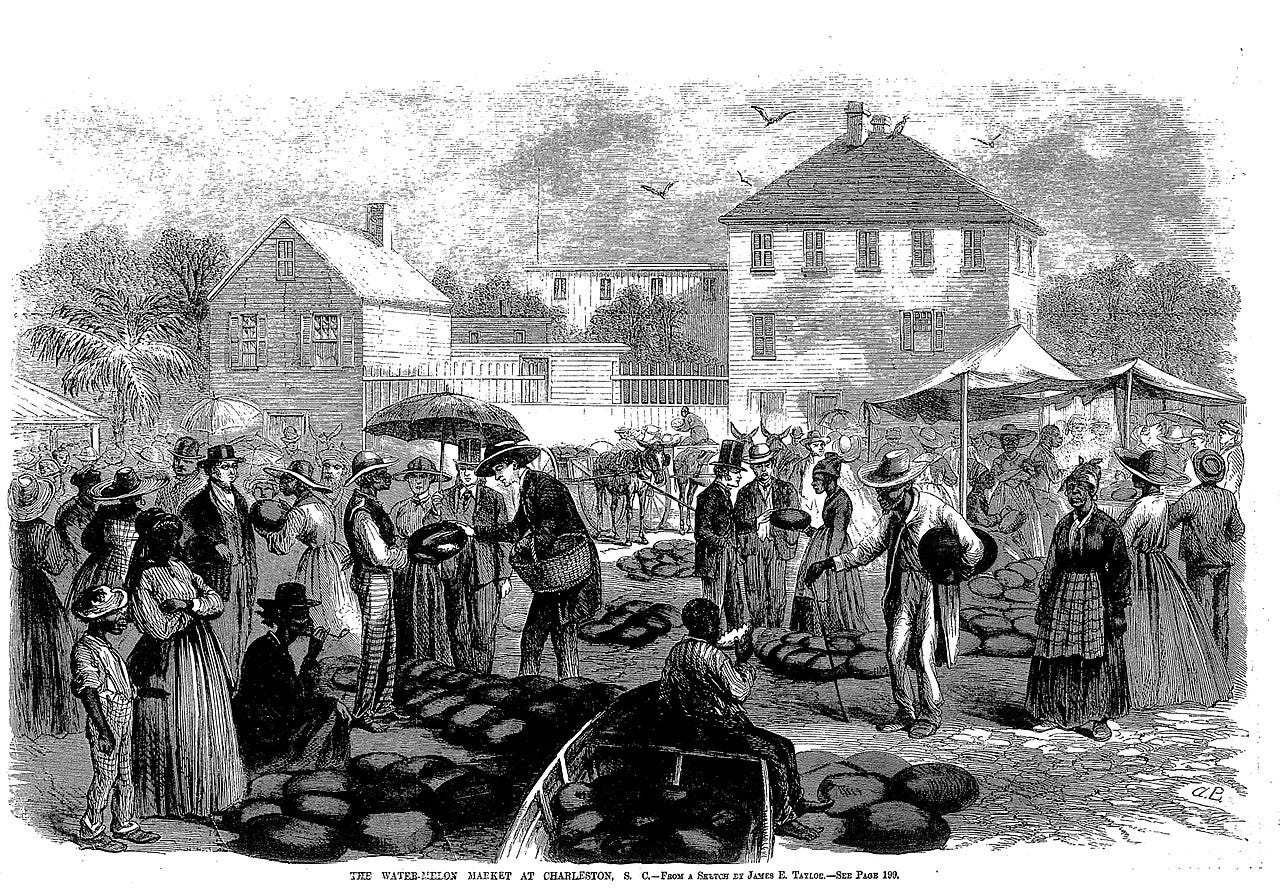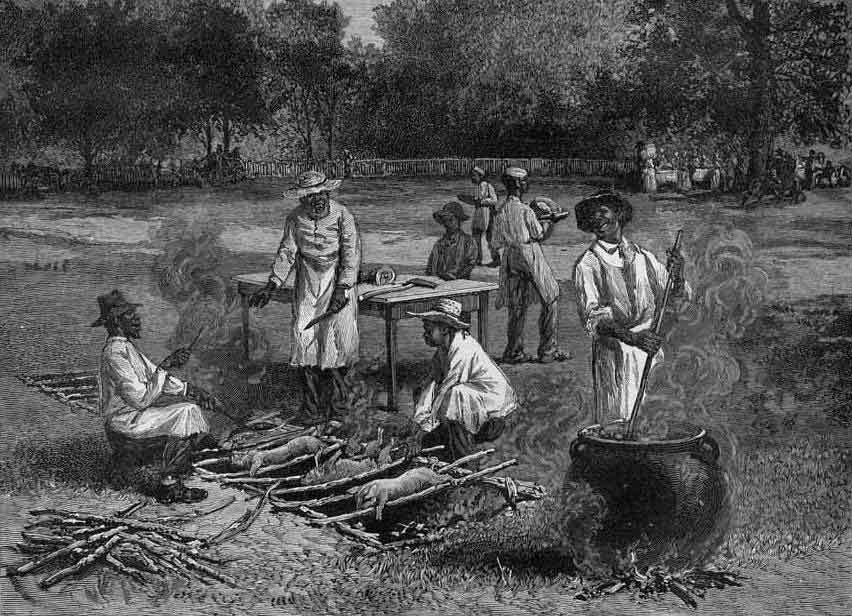If you enjoy these Black History stories and want to keep discovering more, consider becoming a subscriber today. Your support helps me share these important narratives with even more people.
“The people of Texas are informed that, in accordance with a proclamation from the Executive of the United States, all slaves are free.”
These words, declared on June 19th, 1865, by Union General Gordon Granger in Galveston, Texas, echoed across plantations, marking the true liberation for countless enslaved Black Americans almost two and a half years after the original Emancipation Proclamation. A day of sorrow-turned-celebration and Juneteenth was born. For generations since, this date has carried deep meaning and gastronomical traditions that speak volumes about survival, strength, and resilience.
Food as Resistance
For enslaved Africans and their descendants our culture wasn’t merely passed down through stories and music, food became an act of rebellion, an invisible preservation of their heritage, linking generations together over the flames of barbecue pits and pots of steaming greens. When their language, rituals, and customs were policed and outlawed, the kitchen remained a sanctuary of expression, upliftment, and silent revolt.
Watermelon wasn't always the stereotyped image we know. It once symbolized hope, independence, and the right to one's own destiny. In pre-Civil War America, watermelon was easily farmed by enslaved Africans in the Southern heat, one of the scarce fruits granted to them by plantation owners. It became an avenue toward independence, contribution, and small glimpses of economic autonomy, resonating into the freedom celebrations of Juneteenth. Even following emancipation, freed families turned to watermelon crops as self-sustaining alternatives to burdensome sharecropping systems.
The Roots of Black Barbecue
Barbecue carries with it a legacy equal parts hardship and flavor. In the antebellum South, enslaved Africans carefully mastered pit-cooking, spending long days digging pits, slaughtering animals, and meticulously tending cooking fires for their enslavers.
But their pain birthed an American culinary art form, combining African, Indigenous, and European traditions, creating dishes rich in flavor, skill, and history. This tradition didn’t die after freedom—it thrived, spreading north and west as Black Americans relocated.
Barbecue swiftly transformed from necessity to celebration, an essential centerpiece of Juneteenth festivities.
The Journey of Collard Greens
Greens traveled with the enslaved Africans who first landed on the soil of Jamestown, quietly becoming one of their kitchen staples when most of their original diet was violently stripped away. Collard greens flourished despite harsh conditions, harvested repeatedly, and cooked countless ways through lean times and hardship.
Often combined with pork fat or small scraps of bacon, greens became both a nutritious comfort and a culinary tradition passed down family lines. Their sheer presence celebrated perseverance even when hardship overshadowed joy. Today, dishes of collard greens still symbolize enduring strength, a savory tribute at every Juneteenth table.
The Color of Juneteenth
“Red is the color of strength, spirit, life and resilience.”
Red foods infused celebrations with cultural remembrance, echoing their spiritual symbolism traditionally important in West African culture. From kola nuts crushed into energizing drinks to hibiscus flowers brewed into bissap tea, formerly enslaved people kept their ancestors close through shared flavors, savored year after year. With emancipation, red ingredients took new forms—fresh fruits turned syrups and drinks, red corn whiskey brewed carefully in barrels, or homemade teas and lemonades strengthened by cherries, strawberries, and raspberries. Even soda joined the feast with Texas’s iconic “Big Red” a longstanding Juneteenth favorite.
Red Velvet Cake
Another Juneteenth favorite is red velvet cake, a culinary mix of the rich and bitter histories intersecting during slavery in the South. Initially reserved as an extravagance for plantation owners, enslaved bakers adapted and refined recipes that drew on available ingredients—unintentionally creating something extraordinary. Red velvet cake became more than dessert; its deepening hue symbolized joy, pain, and remembrance of blood shed. Following emancipation, it transformed into a key celebration dish enjoyed at Juneteenth family gatherings. Though today’s vibrant-red cakes differ somewhat from their earlier, more subtly hued ancestors, they remain unmistakable symbols of African-American history, struggle, and celebration.
Honoring Juneteenth is Food History
Juneteenth foods aren’t just delicacies, they’re living memories. From the heat and spice of barbecue to the sweetness of watermelon and the soulful nourishment collard greens offer, each dish tells of resilience and resistance, strength amid strife. When we savor red velvet cake or sip fresh hibiscus tea on Juneteenth, we open conversations that honor a legacy of history and solidarity. Let each bite serve as a reminder of the ancestors who fought valiantly against bondage, their invisible heroes forever present at every feast.
As we gather around tables this Juneteenth, let us recognize these dishes for what they truly represent: freedom, resilience, and a delectable taste of the truth behind the triumph of Black heritage.
What are you opinions of the Foods of Juneteenth? We'd love to hear your thoughts and ideas in the comments!
You can learn about more about Black History at my YouTube channel and Podcast












Thank you for sharing 🙏🏻 Nutrition education is incredibly white washed- I try to learn as much as I can as a nutrition expert and I appreciate you sharing the cultural and historical context of Juneteenth foods!
watermelon is also a symbol of freedom for Palestinians. :)
thank you for sharing this. it's fascinating.